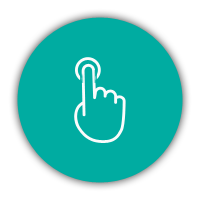Watching the Scale?
So you’ve been doing everything right: eating clean and mindfully, counting calories and steps, busting your hump at the gym and doing cardio. All of that worked for a while, and you steadily saw the pounds melt away. But now that number on the scale isn’t budging. You’ve hit that dreaded plateau. It’s a normal part of the process. When you lose weight, you’re not only losing fat, but also lean muscle. Once your lean muscle mass declines, so does your metabolism. But there is good news. All you need is a tweak to your routine to jump-start that slimdown. Making minor changes like lifting weights or eating more protein can get you going. Here are some tips to help modify your weight loss plan to help you push past that plateau and keep moving closer to your goal.
>If you have been all about cardio, try doing more strength training. Yes, you love spin class because it burns a bajillion calories. High intensity cardio does burn a significant percentage of calories from carbohydrates, so after your class you feel famished and seek to replace that energy. Most people feel that they deserve a reward because they have worked so hard, so they allow themselves to eat more than they normally would. Try alternating cardio with resistance training. By adding in some strength training, you may shed more fat (specifically belly fat) than cardio. It will also help you build that lean muscle, and the more lean body mass you have, the higher your metabolism. Be mindful of the scale. As you begin to gain muscle, your rate of weight loss in pounds may be a little slower, but your rate of fat loss will be greater. Try doing at least two strength workouts a week with your cardio sessions.
>If you have a food journal app, start measuring out your portions. Keeping a journal of your food can help you be more mindful of what you are eating. Dieters who record their meals and snacks daily shed twice as much weight as those who don’t. If you hit that dreaded plateau, it might be worth looking at what you eat in a day and seeing how much you are actually taking in. Recording your food for a week would be even better.
>If you have been cutting calories, try eating a little more. Believe it or not, you need to eat more to burn more. If you have had a low-calorie intake, you can start to lose metabolism-boosting muscle as well as fat mass. You want to lose weight while preserving muscle mass. This means that you need to increase your calories. But that doesn’t mean you should head to Olive Garden for a never-ending pasta bowl. You need to choose good quality foods and spread them out among your day.
>If you have had veggies for every meal, you may need to back off a bit and add in more protein. You should have a serving every couple of hours. This doesn’t mean to have a hamburger from McDonalds. Try adding in nuts, eggs, and lean meats. They are more caloric than an apple or a pile of power greens, but you will stay fuller for longer with protein. Adding in protein will help control appetite and manage body weight. This will also fuel your muscles.
>If you do three 60-minute workouts a week, try switching to shorter daily sessions. Shorter workouts could be better for your weight loss journey, but you need to do them regularly. Short but intense workouts have a greater excess post-exercise oxygen consumption (EPOC) than you would get from a long, easy run. Try adding in a challenging, high intensity interval training, or HIIT, workout that will leave you breathless. Even if your workout is short, it will help you to have a consistent calorie burn for the next 36 hours.





